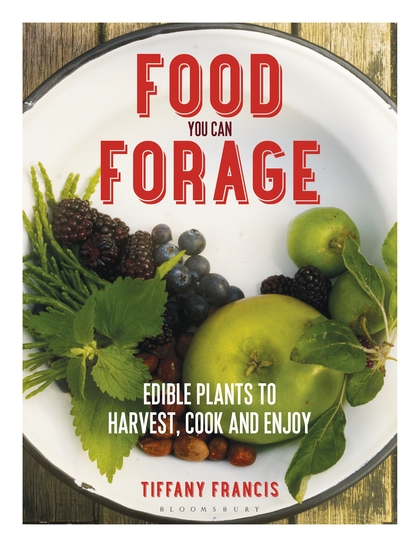
Reviewed by Ian Carter
There are plenty of books about wild food these days, describing how to find it and how to make best use of it. This one deals with a comprehensive selection of plants, including seaweeds. It also includes a handful of fungi (just 7 species) but, rather oddly I thought, it ignores some of the very best, and easiest to find and identify.
The book is nicely illustrated with photographs, many of which are given a full page (and mostly taken by the author), as well as attractive colour paintings depicting each species (all by the author).
The text is brief, with just a short paragraph or two for each plant, but it covers the basics of what the plant looks like, where and when you are likely to find it, and how you can use it as food. It also often mentions the history of the plant in Britain and how people have used it in the past. A short section at the end of the book includes a few of her favourite recipes with some mouth-watering photos.
It’s a lovely book to browse through and the brief text means that you are not overloaded with too much information if you just want the basics. I enjoyed her obvious enthusiasm for the subject and I can see the book helping to inspire others to take the plunge. If you are new to foraging and are mainly interested in plants then this offers a good, accessible introduction.
There are alternative options that provide more detail and are more comprehensive so if I was restricted to one, or even two or three, books on wild food then this one probably wouldn’t make it. But it’s always good to get another take on a subject and the fact that this book is so well-presented means it will be a tempting choice to reach for and refer to regularly.
I would add one word of warning. Because the book serves as a light introduction to the subject you will want to double check that a plant you are about to eat is not confusable with toxic look-alikes. For example, although the text mentions that Hogweed ‘is not to be confused with its toxic sibling Giant Hogweed’, the publishers have inserted a full-page photo that looks more like Giant Hogweed than its smaller relative. Actually, having checked online, I think it’s some form of exotic Cow Parsnip from North America or Asia. Whichever one it is, it won’t kill you but it could cause very nasty skin blistering if handled. The similarly purple-spotted Hemlock in the same family would be a more serious misidentification (it did for Socrates apparently) but doesn’t get a mention. Do take care.
Food you can Forage: Edible plants to harvest, cook and enjoy, by Tiffany Francis is published by Bloomsbury.
Remarkable Birds by Mark Avery is published by Thames and Hudson – for reviews see here.
Inglorious: conflict in the uplands by Mark Avery is published by Bloomsbury – for reviews see here.
[registration_form]